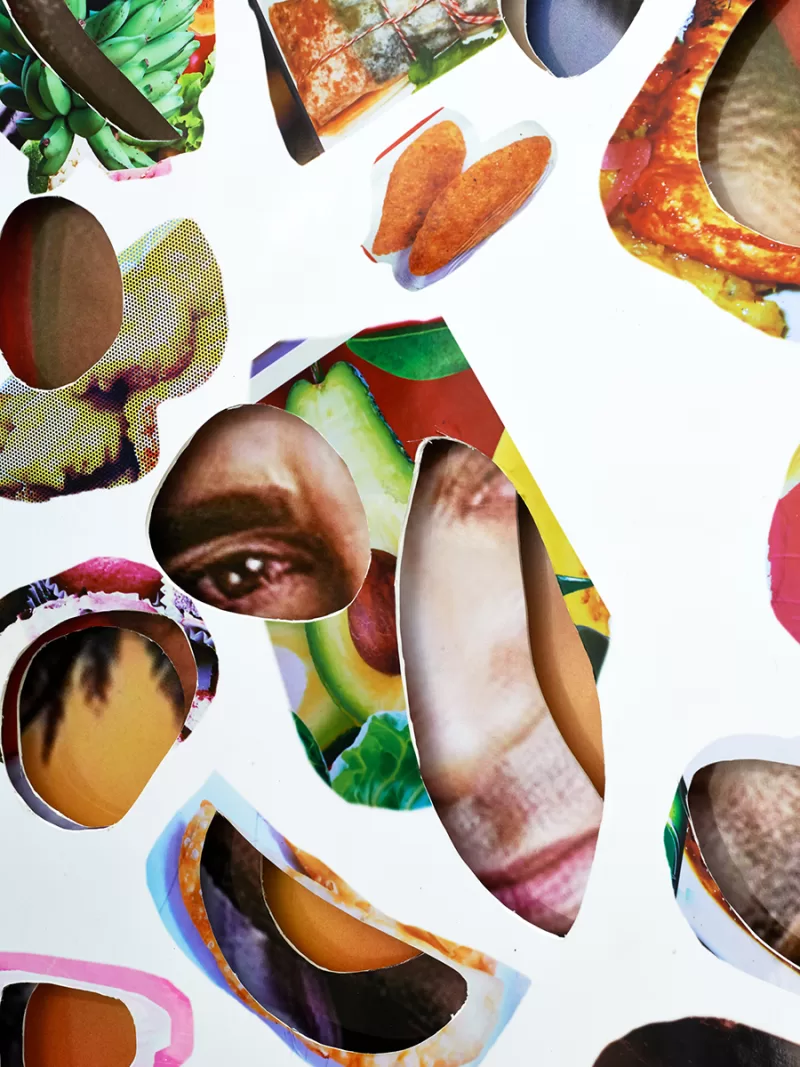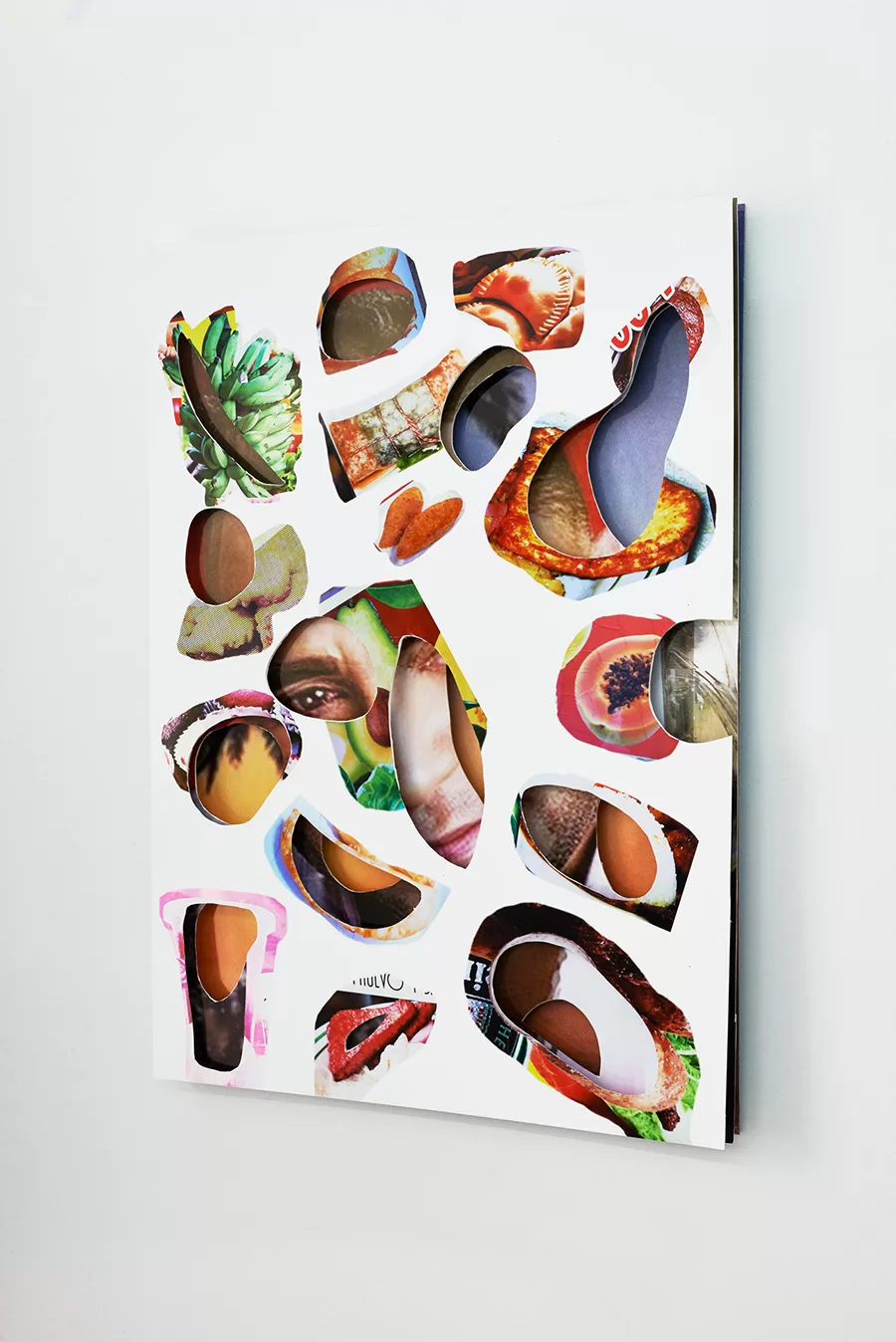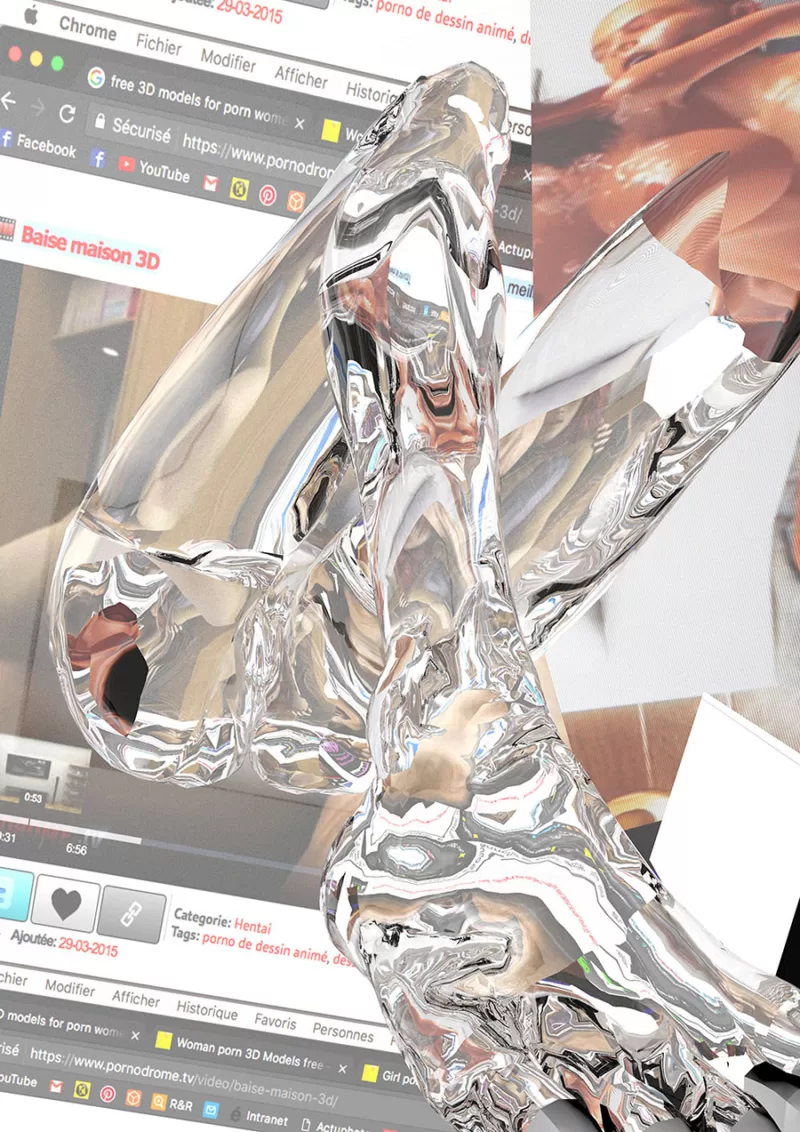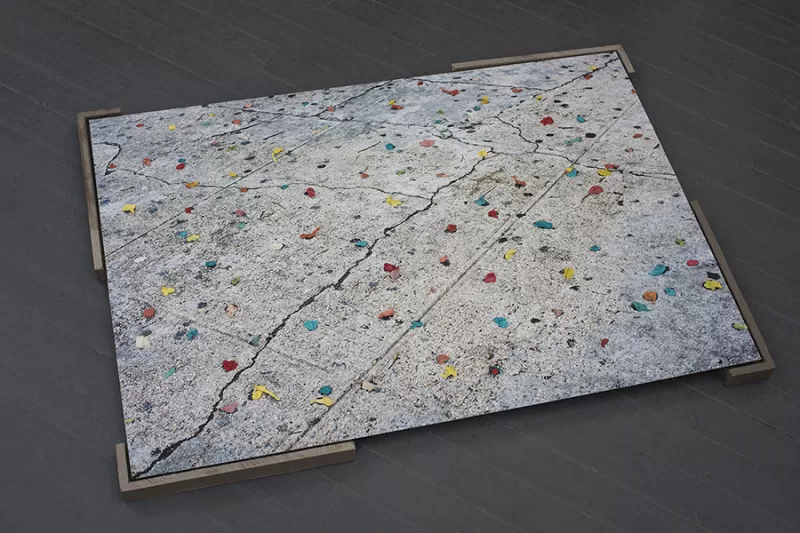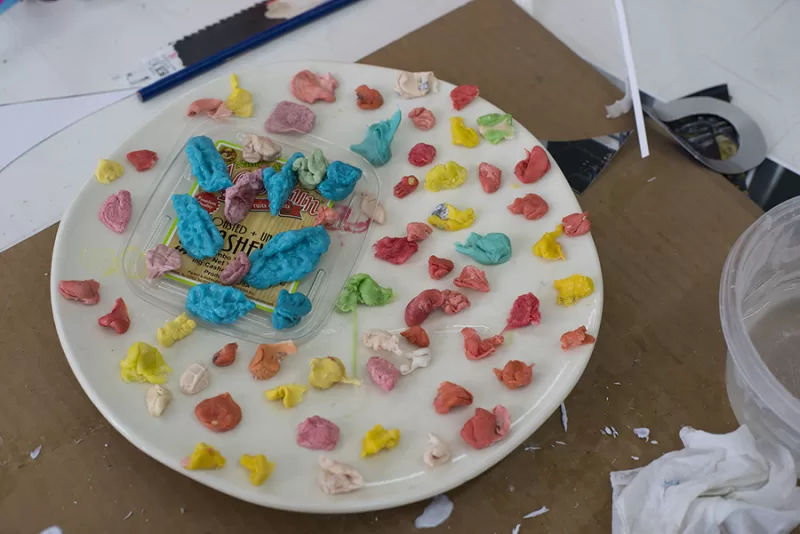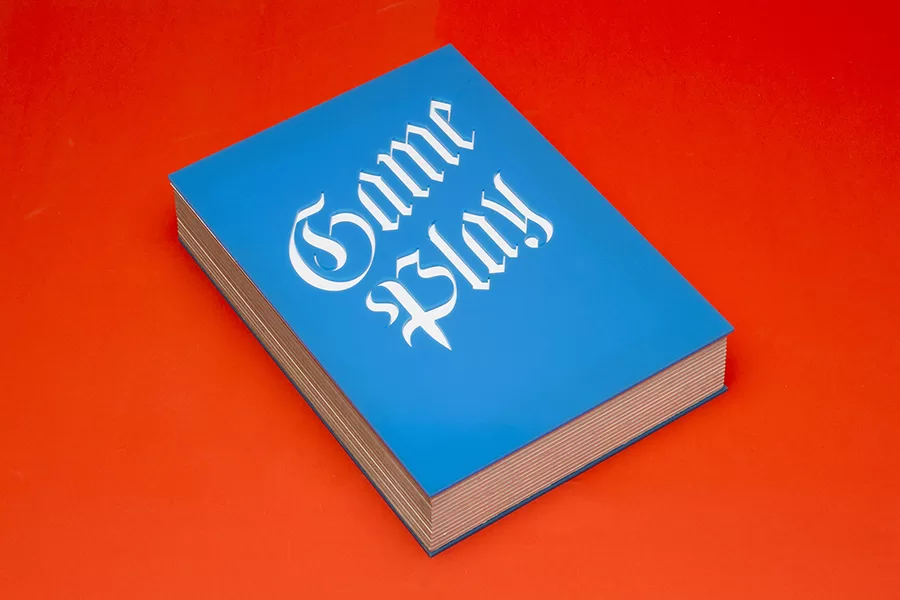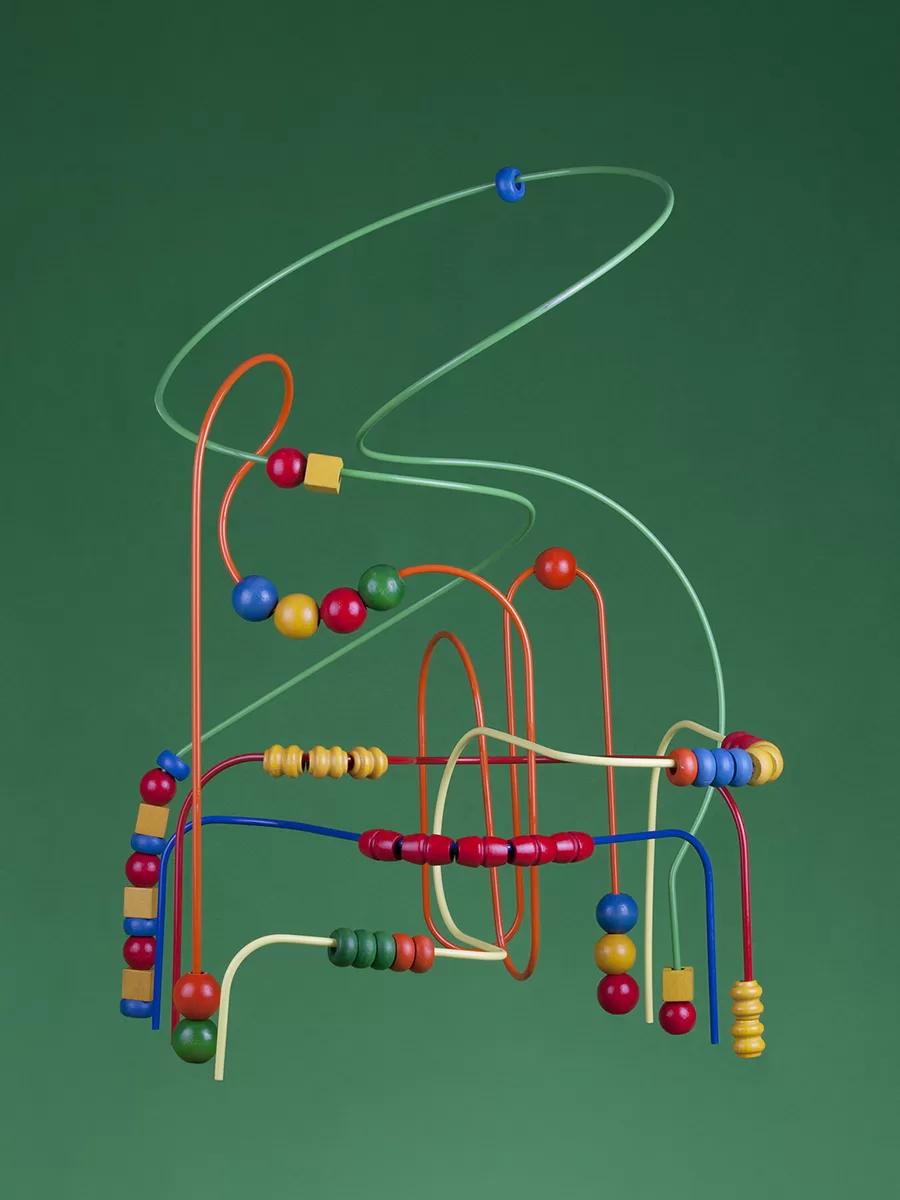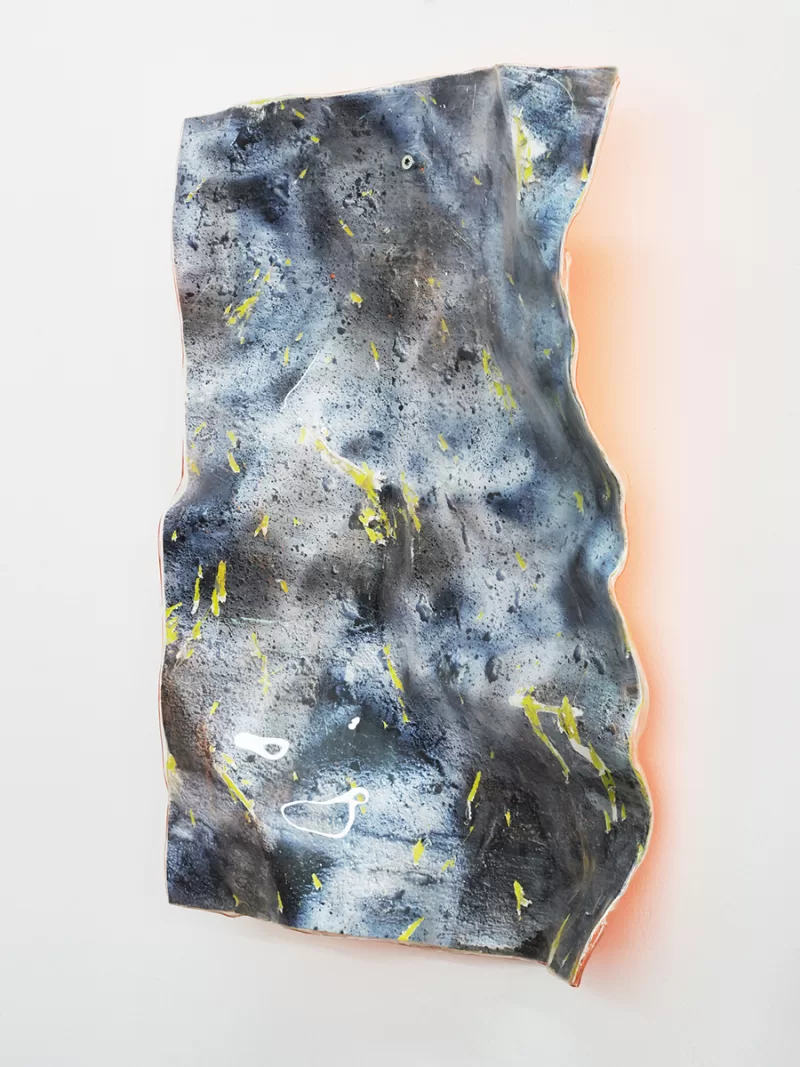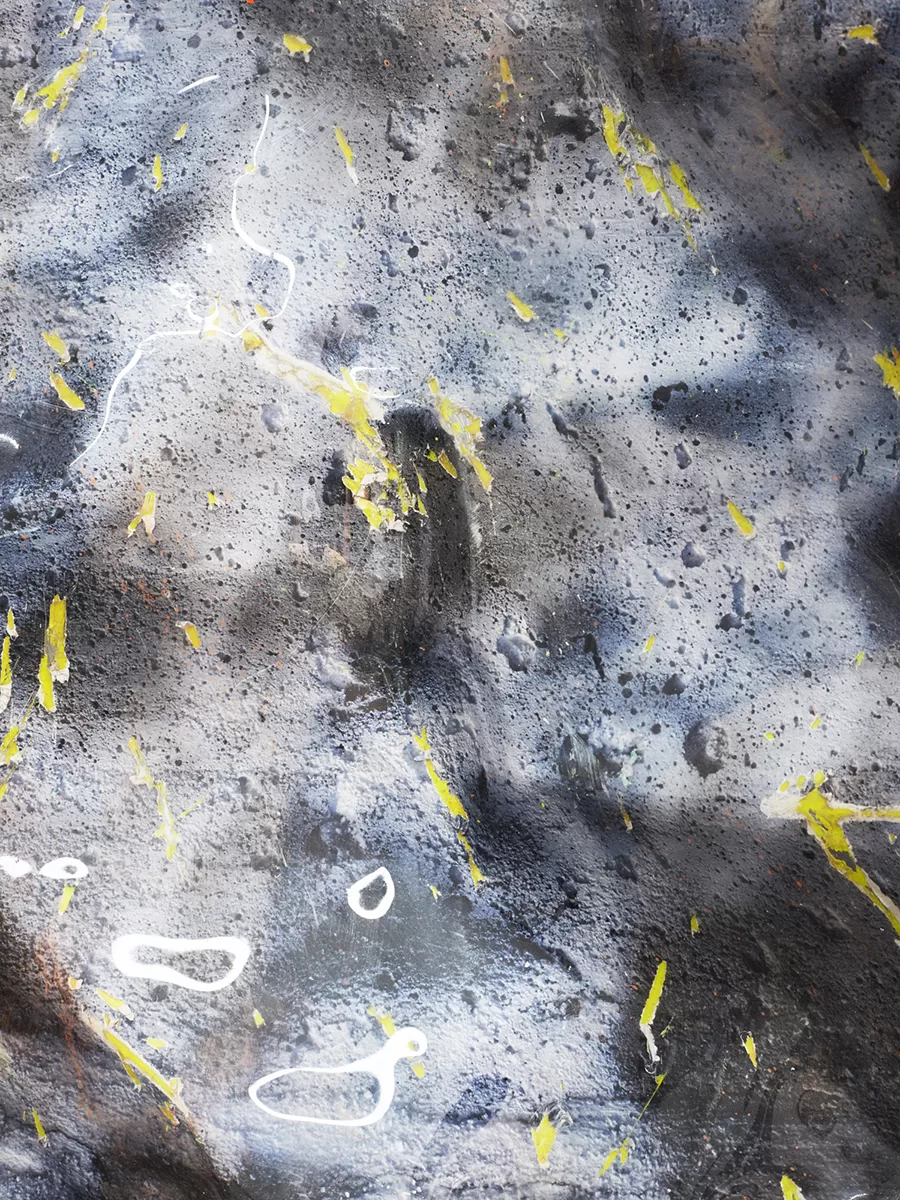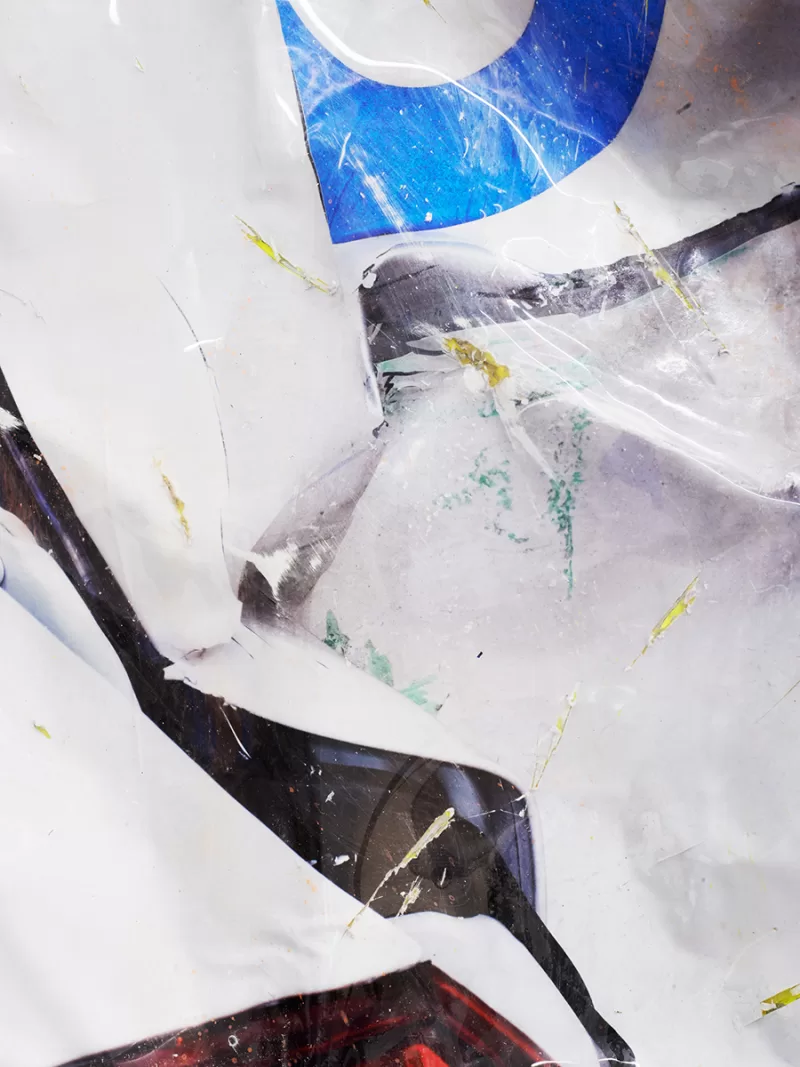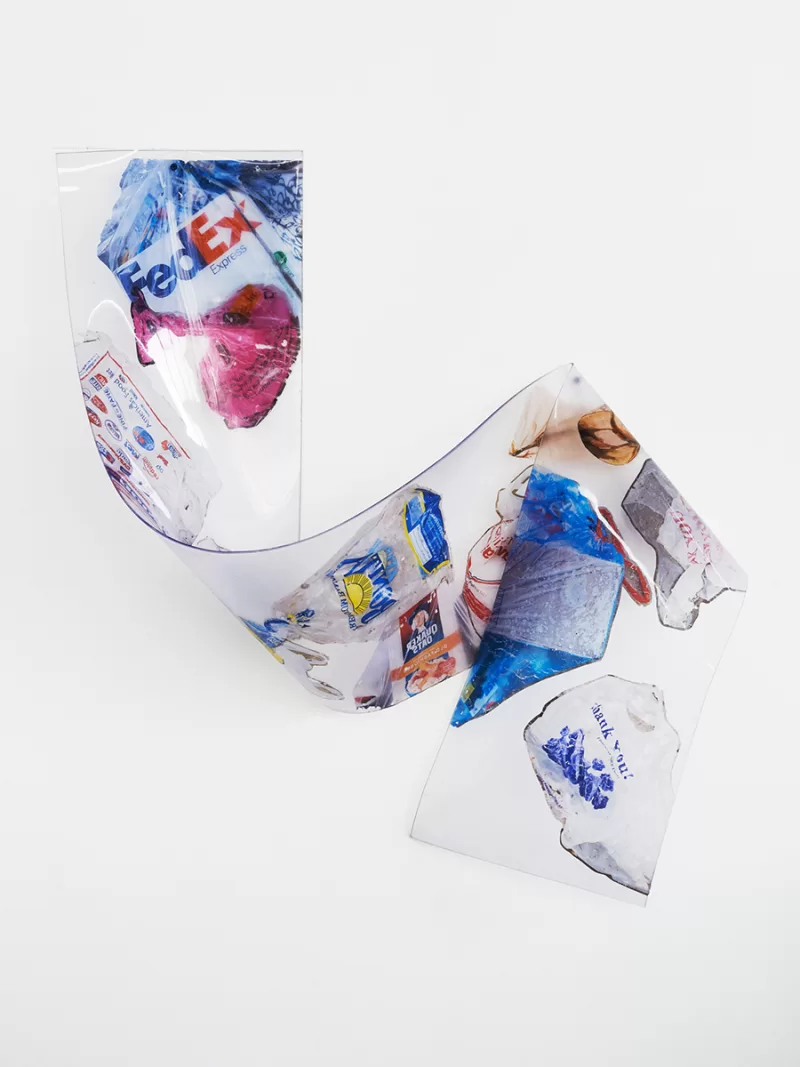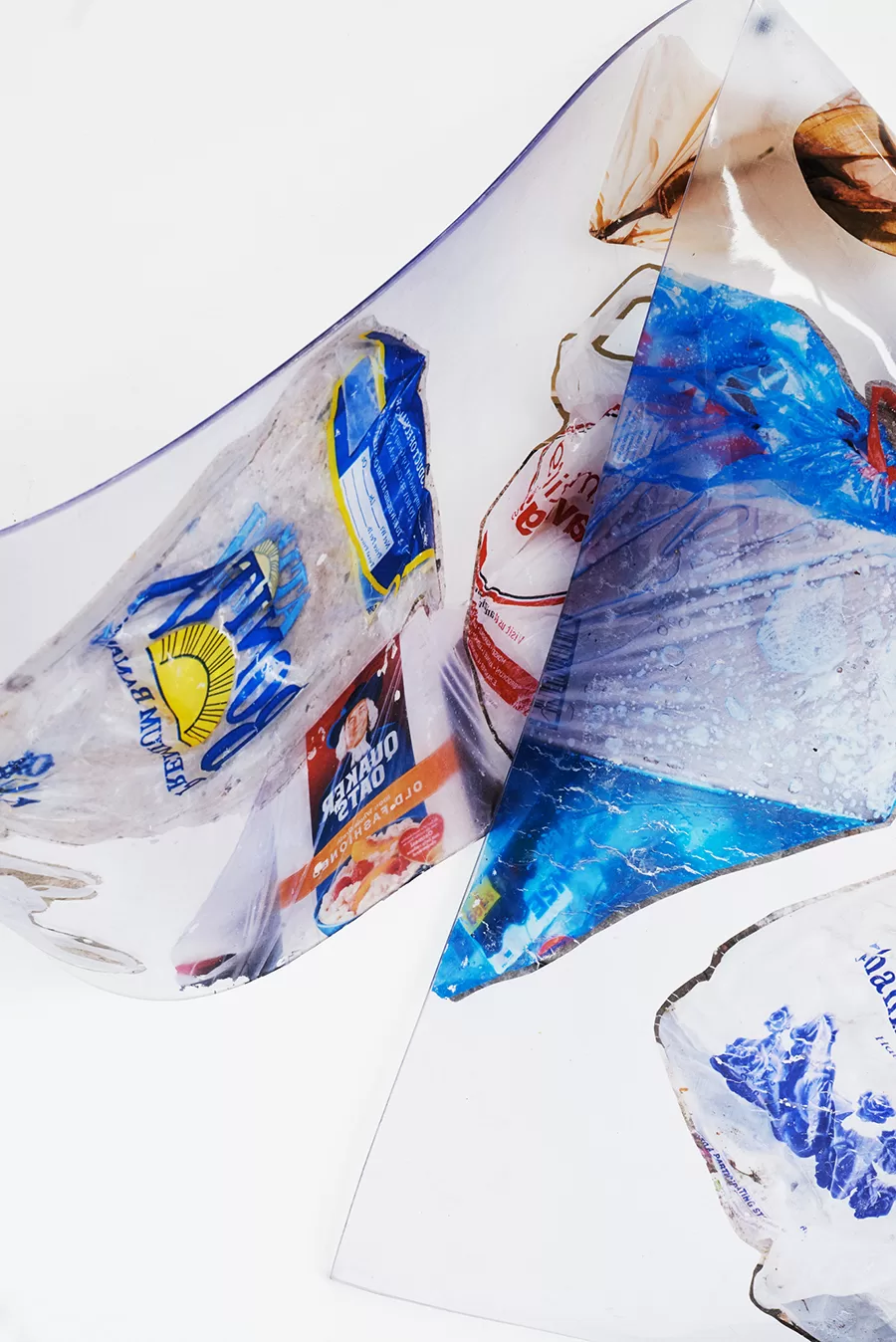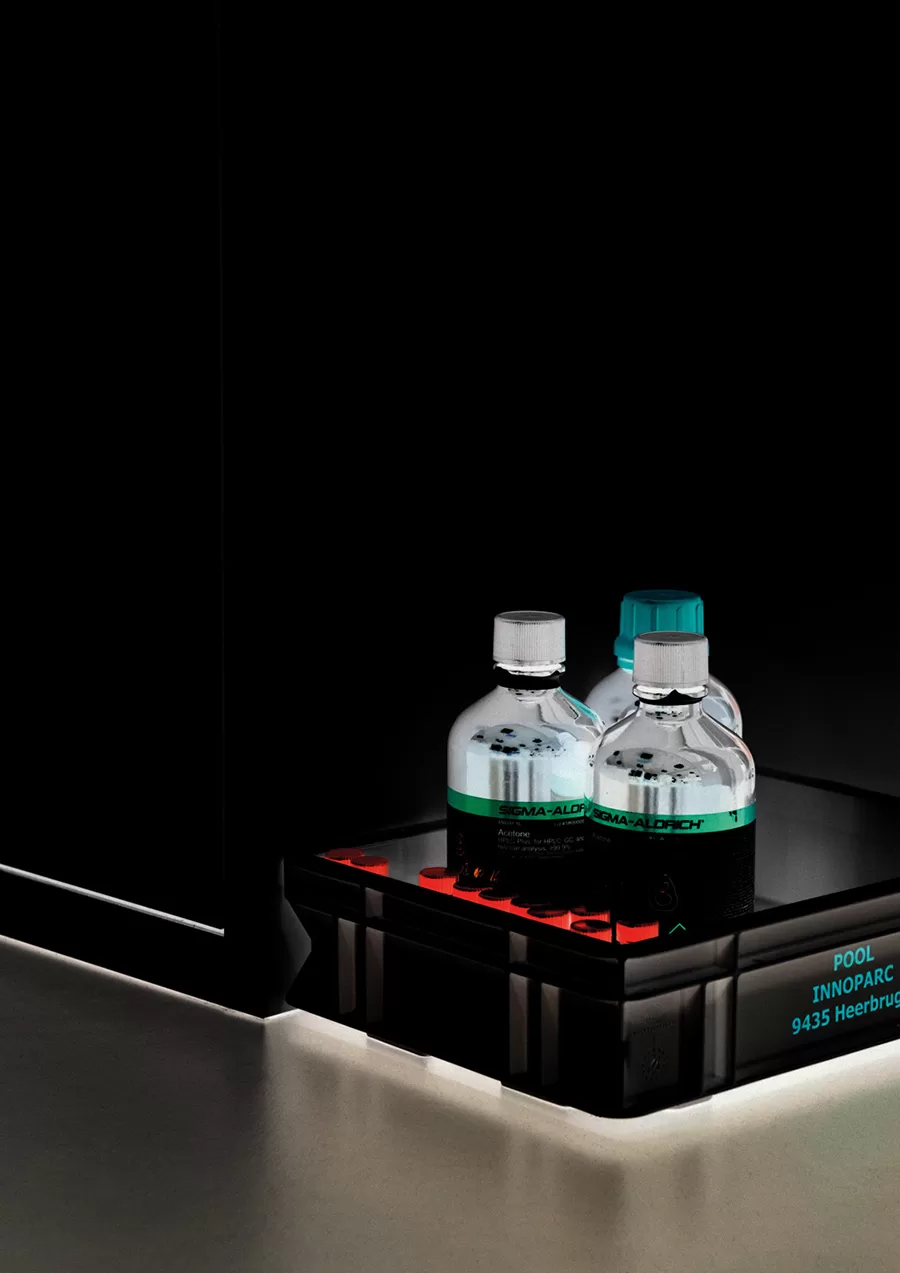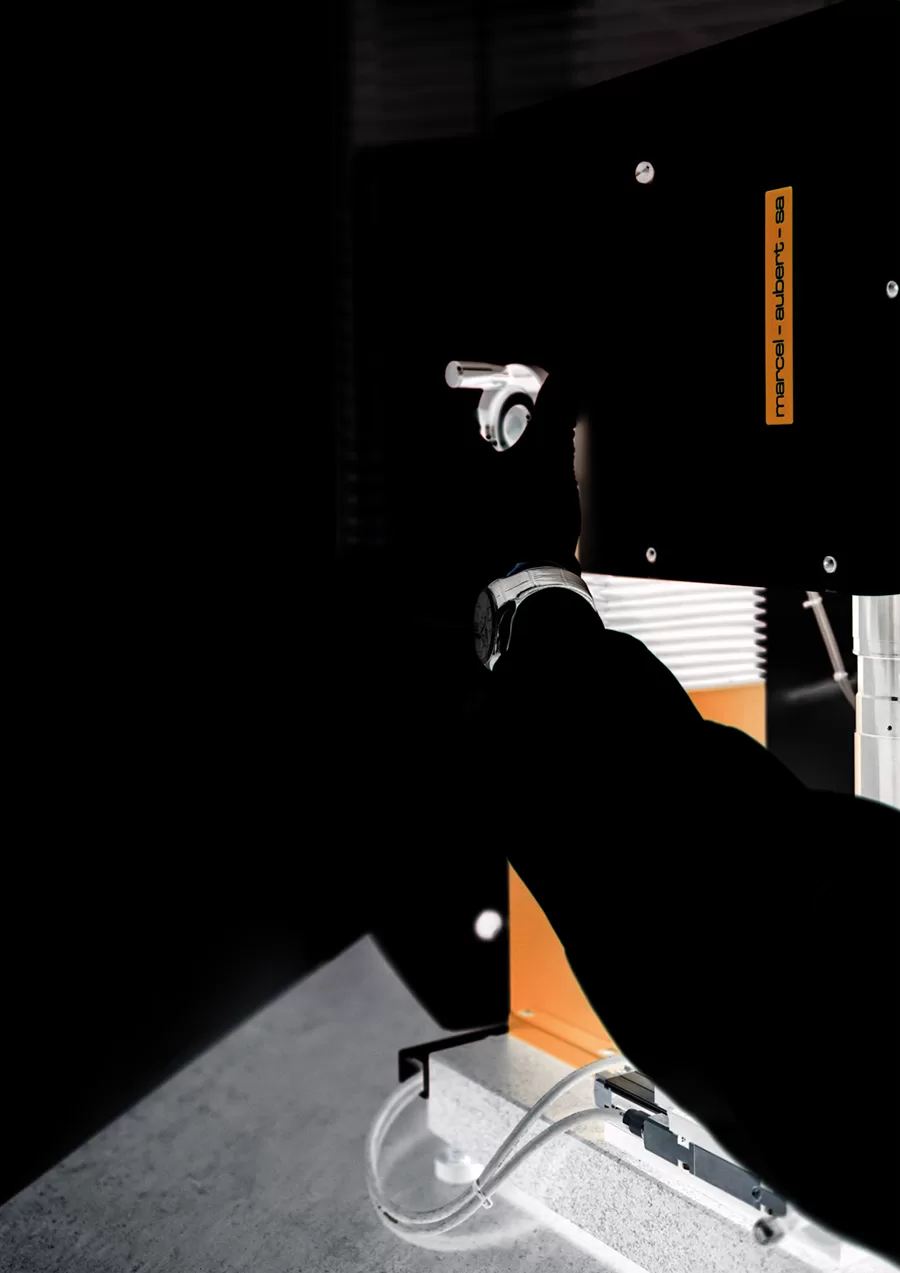Interview – ÉCAL Master Photography Students 2017
Karla Hiraldo Voleau
How is your idea about photography changing or taking shape while studying at ÉCAL?
My practice definitely evolved a lot since I’m here. The course pushes us to think about photography as a tool, as a piece of a bigger puzzle. At least that’s how I understand it now.
Photography is not that precious thing anymore, out of reach, that long and expensive process. It can be the total opposite, and personally I love fast-photography – I don’t know if that term exists though – meaning instinctive cheap looking and immediate photography. Also very empirical. It resonates totally with the themes I enjoy exploring and with our contemporary culture.
Is there a particular event/course/project you want to talk about?
We have been doing quite a lot of workshops this past year. We flew to Berlin and New York to work with cool artists such as Taiyo Onorato and Letha Wilson; had three visual artists/photographers come to Lausanne to make us sweat and produce new content, during a week each time. The project I’m most proud of is the upcoming show I’m preparing along with 5 other Écal students and 6 from KABK, for the photo festival in Arles, in France. We’re actually working around the concept of collaboration, and with my partner Anna Kieblesz we are doing a diaristic and introspective project about limits, intimacy and doubles … Can’t really say more than that yet, but it will be visible during the opening week of the festival!
How was your field trip to New York? What was the best part of it and why?
It was my first time in New York… Such a huge city. I’m from Paris but I felt like I came from a little town! Loved working here though. I investigated the Dominican neighbourhoods and had a little bit of nostalgia meeting ‘Dominican Yorks’ (because I’m also from Dominican Republic). My piece was a collection of iconic Dominican food items made into a collage, in order to create a cheesy, colourful and ironic portrait of a Dominican figure. I went after my father’s steps in Washington Heights, he used to live there a long time ago. The final object is a sweet tribute to what I felt walking in la Duarte those few days.
Who is your inspiration?
Latest inspiration would be Peter Campus, his live video work is amazing. I love the idea that the viewer makes the work/or at least that he can participate. The fact that you are the centre of the pieces and the video acts sometimes like a mirror is so relevant, especially today, with all the self centered vibes going around … Makes you really conscious about your own gaze.
What’s your next project about?
I am currently working on the robotization and dehumanization of sex and love. Personal relationships fascinate me, and especially among the young generations during the digital age. All of my works now investigate in a way or another how interactions are changing, and how the concept of intimacy is evolving.
What will be your next steps after school?
After school, I would like to focus a bit more on personal projects while being in residencies during the summer and autumn after my graduation. Then, soon enough I will start working on developing my own studio and work as an independent artist, preferably abroad.
Why would you recommend this program?
I would recommend it if you are a photographer already familiar with all the technical and traditional aspects of the medium, and you’d like to push it a little further. If you’re interested in sculptural photography, in mixed media and conceptual approaches. And Swiss life is quite cool.
Simone Sandahl
How is your idea about photography changing or taking shape while studying at ÉCAL?
This year has surely made me rethink ways in which photography can exist. I was simply supposed to be a classic still life photographer, but now I am making both sculptures and CGI images! I am suddenly experimenting and questioning new roles of contemporary photography, dealing with the problematic of making imagery that draws the screen-viewer to the physical space. Why should you travel to see a photo that is accessible online? Does the image need a physical space or can it exist only as a digital file? With these new questions in mind, I am now approaching my work more 3-dimensionally, trying to grasp the language of sculpture. Since the largest arena for viewers is screen-based, I now consider how not only I can document my work, but make it new and interesting as a digital image.
Is there a particular event/course/project you want to talk about?
The ÉCAL MA Photography is great at hosting diverse week-long workshops. To me this is the best chance to learn from other photographers and artists. Our recent New York workshop which dealt with materialising photography with Letha Wilson and Ethan Greenbaum, was in direct contrast to our previous workshop about computer generated imagery with CGI artist Thomas Traum. I was very sceptical about CGI at the beginning, thinking how this could possibly have any relevance to my still life practice. But because it was taught in the format of a workshop I was ‘forced’ to deal with this foreign world for 5 consecutive days. I learned how much working with 3d software such as Cinema 4d has a lot in relation and gives new possibilities to still life photography in terms of construction, lighting and composition. I now use the tools gained from the workshop in my practice.
How was your field trip to New York? What was the best part of it and why?
As it was my first time in New York, I was pretty overwhelmed by all the diversity contained in one city. Visiting artists, curators, publishers and art directors was probably the best part. Seeing their studios, and having an open talk about what it means to be a creative in that city really helped to demystify it all. I left it with two advices strongly clinging on to me; to gain and maintain good relations as it is crucial to be well connected in the industry, and that at the beginning of your career you should say yes to everything as it may likely lead to something bigger.
Who is your inspiration?
Right now it’s dominantly children psychology and toys. But these thinkers and artists have reoccurred as my source of inspiration: Mary Douglas, Sigmund Freud, Man Ray, Edward Weston, Irving Penn, Marcel Duchamp, Louise Bourgeois, Helen Chadwick, Elad Lassry and Jeff Koons.
What’s your next project about?
In my practice I work with two themes ‘Something Dirty’ and ‘Pretend Play’. The projects I’m working on now is on the theme ‘Pretend play’ which deals with ways children play into adulthood. I twist the story or the intention by placing new meaning in the act or the toy, that can be rather melancholic or even uncanny. Right now I’m constructing replicas of a tower made of brick toys in primary colours. The replicas are made of different materials, for then to be deconstructed in new ways. The work deals with ways of representation and the human primal urge to build and destroy and how newness arise from it. I will have the work online in July on my website.
What will be your next steps after school?
My goal is to have a parallel practice. To continue my artistic practice in any format possible, as well as working for an agency where I can apply my practice commercially.
Why would you recommend this program?
The seemingly best route to become successful in the photographic industry is to have an artistic practice, be well connected, and produce good work. ÉCAL does offer this. As I say to everyone, ÉCAL MA Photography is unlike any other master program. It is densely scheduled most days with lectures, individual talks, workshops, homework and several assignments that are evaluated and graded by the end of each semester. At ÉCAL you can fail unlike other art schools. This pressure and pulsating rhythm that values production over contemplation, really challenges your time management skills. The school is well connected and a skilled promoter that you as a student can benefit from. Most unique to this programs is that it offers you a chance to get in touch with and learn from a wide spectre of professionals associated with the field of photography, from specialised to a broader sense (commercial photographers, curators, editors, publishers, art directors, artists, animators, VR and 3D specialists). This course successfully questions and challenges the role of contemporary photography through new technologies and art trends, while still teaching us to apply it to a commercial practice.
Justinas Vilutis
How is your idea about photography changing or taking shape while studying at ÉCAL?
First of all, before arriving at ÉCAL, I studied graphic design and had no formal education in photography, hence while I was still taking photographs, my primarily interests were mostly outside of its realm. I was mostly interested in fine art, sculpture and philosophy. ÉCAL has provided an extraordinary chance to actually immerse into the subject of photography. Studying here really allows to see how diverse photography has become through artists, practitioners, curators and lecturers that teach us everyday and share their experience and knowledge. Due to vast proliferation of mobile phones and other user-friendly means of capturing images, photography has become immensely accessible. I believe that in order to survive, photography has to become exceedingly “accelerationistic”, repurposing and enmeshing itself within other mediums. To either perish as such or to create a shift within itself, that would open up the space for meta-connectivity and post-photography. As photography has always existed alongside of technology, for me the key is to use the medium as a frame or a focal point that is able to host the ecosystem of screens and surfaces.
How was your field trip to New York? What was the best part of it and why?
I had lived in London for about six years, and I believed New York would feel similar. However, I was definitely mistaken. I was surely surprised by the scale and diversity of the city. I would look at the map and the seemingly 10 minute journey would end up being at least an hour long. I was absolutely fascinated by streets, galleries, stores and cars. Overall, workshops and studio visits have been an incredible experience. Our workshop tutors Letha Wilson and Ethan Greenbaum have been greatly generous in terms of advice, sharing their knowledge and skills. Working in their studios as well as doing outside studio visits definitely provided more in-depth knowledge of creative processes and the art community in the city.
Who is your inspiration?
I would not say that I have a particular source of inspiration. I would prefer to acknowledge accumulative experience rather than a singularity. I greatly enjoy cinema, some of my favorite movies include The Big Sleep, Funeral Parade of Roses, Caché, Fitzcarraldo (including the ‘making of’ documentary Burden of Dreams). Right now, I am watching Picnic at Hanging Rock. Furthermore, I have seen every single episode of Here Comes Honey Boo Boo.
What is your next project about?
Recently, I have published a book with my previous work that contains photographs from the past several years called Becoming a Dog that was launched during LA Art Book Fair together with &editions and have just published a book called Pleiades as one of the projects at ÉCAL, that was presented during Offprint London. Aside from the projects that I am pursuing as a part of the course, I am particularly interested in sculptural application within the field of photography, combining materials such as metal and plastic to achieve more fluidity.
What will be your next steps after school?
Ideally, I would be able to combine both artistic and more commercial practice and they would manage to correlate accordingly. I am not able to abandon constant self-initiated projects and at the same time I greatly enjoy the pressure of more commercial work.
Why would you recommend this program?
It is an incredible course led by world renowned artists, photographers and curators, an environment where you can only strive for the best, a place that demands dedication as much as it provides opportunities and intense development. It is a highly structured course, that definitely needs excellent time management skills and ability to work at a fast pace. Before ÉCAL, I would have never imagined that a place like this exists. Where else can you see the mountains on your way in the morning and rouge sunset crescendo outside of it in the evening.
Park Shin Young
How is your idea about photography changing or taking shape while studying at ÉCAL?
After I start studying at ÉCAL, my thoughts about photography are getting much more broad in a way. Not only about the photography itself, but also regarding many other aspects that derived from images. As the courses deal with several technical issues and also focus on the contemporary access in the post digital internet era, I see photography as a medium for any kinds of art. My approach to photography has become wide open to all possibilities.
Is there a particular event/course/project you want to talk about?
We had a workshop with an Australian based artist Joe Hamilton during the last semester. Joe’s workshop was truly interesting but also very challenging for me because it was a totally new way of dealing with images. During the workshop, we all started with research based on images and develop them in our own way for the final work. In every workshop, we need to make final work in a week so it is quite tough and busy schedule. But at the same time, we can deeply focus on the subject and experience somehow special experience by submerging into it. After this workshop, I was much more interested in ‘Augmented Photography’ which is one of the main theme of our course’s research programme.
How was your field trip to New York? What was the best part of it and why?
The workshop in New York was really a great experience for me. Actually, I think the city is a very interesting place for people who deal with images. I saw several new inspiring stuff. One of the interesting point during the workshop was a studio visit. We could meet several artists who are based in NYC. Especially Ethan and Letha, the artists we mainly work with, allowed us to experience how they work in reality and show practically the aspects of making.
Who is your inspiration?
All the people I meet everyday.
What’s your next project about?
Now I’m working on the project mainly focus on material itself. I usually work with an archival approach, this project will also be based on research and archive. For this project, I chose the marble as the main material and I make images of several aspects of it. For example, one part is the environmental side of the material manufacture, while the other is the material itself which concentrates on the texture. The last part is about developing an augmented way that applies to the real marble object with surreal 3D material made into a mixed synthetic still-life.
What will be your next steps after school?
I don’t expect there will be any spectacle change after school. I will be an image storyteller as I am doing now. But much more precisely and distinctive through my own special way. To put it concretely, I’d want to make a collective with my friends and deal with several aspects of art and design.
Why would you recommend this program?
One of the best advantages at ÉCAL is that I could meet diverse people from different backgrounds. I can get inspired or collaborate with them and do anything we could. Lecturers are diverse, we can meet artists or the ones connected in the fields. But most of all, I can collaborate with the other departments students in the school, which allows us to create much more comprehensive projects.

